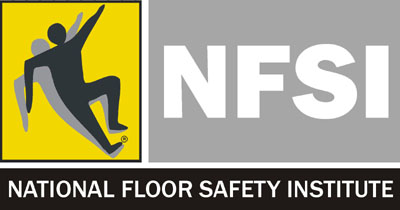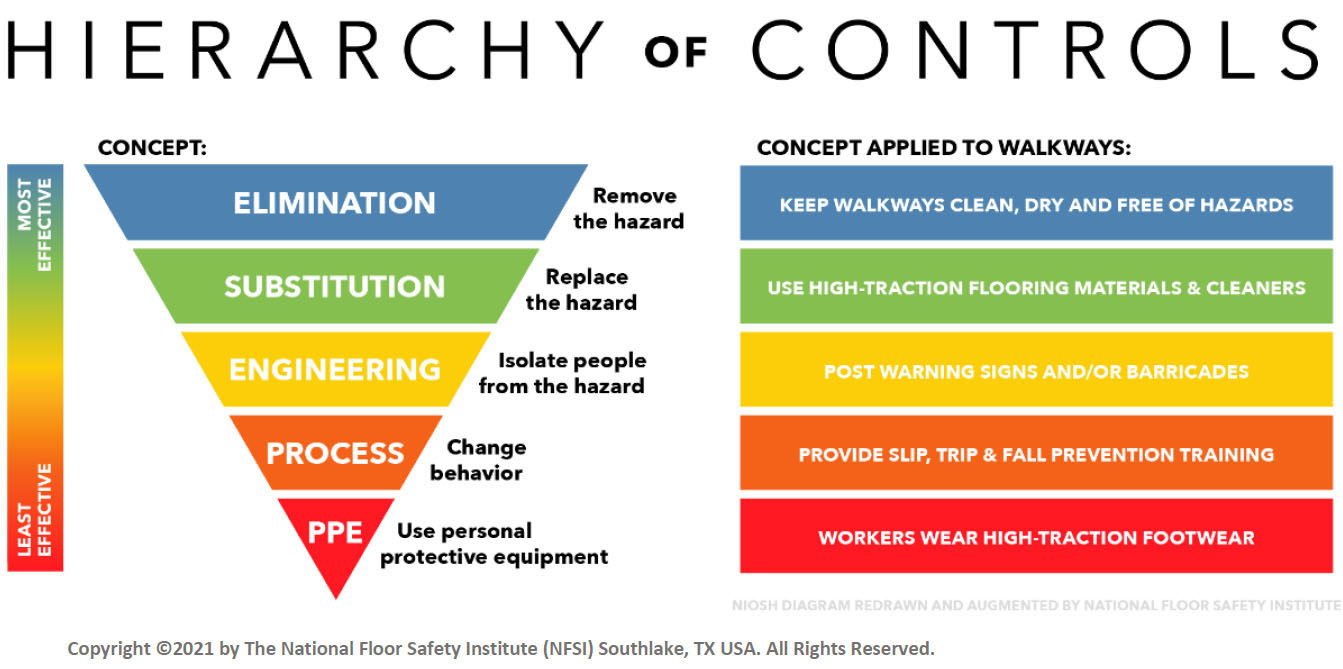Using The Hierarchy Of Controls To Maximize Walkway Safety
Overview
 Traditionally, a hierarchy of controls has been used as a means of determining how to implement feasible and effective control solutions. Hierarchy of controls is a national initiative called Prevention through Design (PtD) lead by NIOSH to prevent or reduce occupational injuries, illnesses, and fatalities through the inclusion of prevention considerations in all designs that impact workers.
Traditionally, a hierarchy of controls has been used as a means of determining how to implement feasible and effective control solutions. Hierarchy of controls is a national initiative called Prevention through Design (PtD) lead by NIOSH to prevent or reduce occupational injuries, illnesses, and fatalities through the inclusion of prevention considerations in all designs that impact workers.
Walkway safety is an essential component of any functioning safety management system to protect workers. The idea behind this hierarchy is that the control methods at the top of graphic are more effective and protective than those at the bottom. Following this hierarchy normally leads to the implementation of inherently safer walkways, where the risk of incidents or injury has been substantially reduced.
Slips, trips, and falls cause nearly 700 fatalities per year and many more injurious accidents in the workplace according to the Bureau of Labor Statistics. Falls are the leading cause of unintentional injuries in the US, accounting for approximately 8.9 million visits to the emergency room according to the National Safety Council.
Building an effective program for walkway safety goes far beyond providing high-traction footwear for employees and utilizing warning signs and barricades in the workplace. Designing the best policy requires working through the hierarchy of controls to first understand what walkway hazards can be eliminated. After working through each component, if the hazard still exists, then Personal Protective Equipment will be necessary.

Elimination and Substitution
Elimination and substitution are the most effective at reducing slips, trips and falls. Keep all walkways clean, dry, and free of hazards. Utilize High-Traction flooring materials, cleaners and matting in the workplace.
Engineering Controls
Engineering controls are favored over process and personal protective equipment (PPE) for minimizing slips, trips and falls in the workplace because they are designed to obstruct the hazard at the source before a worker encounters the hazard. By posting a warning sign or barricading a hazard, workers can see the hazard and avoid injury.
Process Controls and PPE
Process controls and PPE are frequently used with existing processes where hazards are not particularly well controlled. Process controls and PPE programs may be relatively inexpensive to establish. Establishing a Slip, Trip and Fall Prevention Policy and employee training is key in preventing workplace injuries. If the hazard persists through all other controls the last resort is personal protective equipment (PPE). PPE for walkway safety is the requirement that employees wear high-traction footwear.
Copyright ©2021 by The National Floor Safety Institute (NFSI) Southlake, TX USA. All Rights Reserved.
